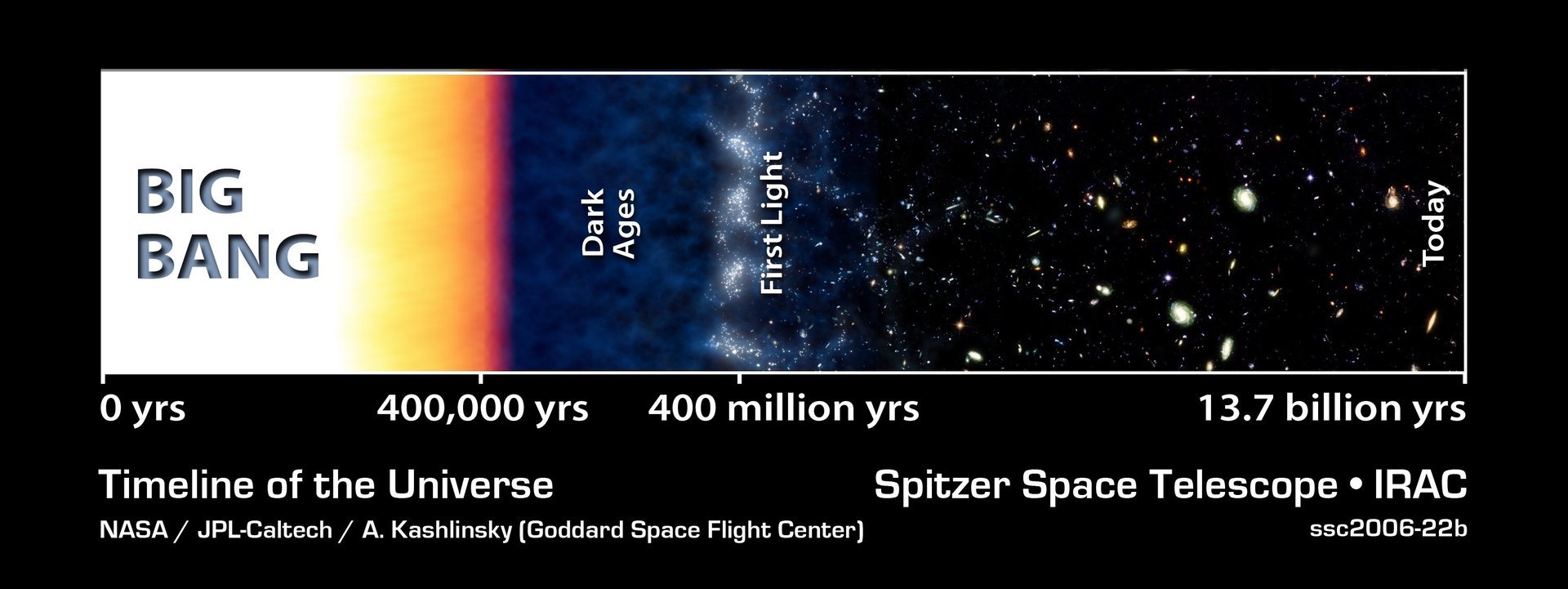So much happened in the earliest moments of the Universe. Elementary particles appeared, the first nuclei of hydrogen and helium, and fluctuations of energy and matter set into motion the formation of galaxies and supermassive black holes. But all of it is invisible to us. When we search the distant Universe, exploring ever further into its history, we can only see to the point when the cosmos was already 380,000 years old. Before that time the Universe was hotter than the surface of a star, and light wasn’t free to travel billions of light-years to reach us. So instead, all we see is a cosmic background of the toddler universe, now cooled to faint microwaves thanks to cosmic expansion. All the really good cosmological data is hidden behind this veil.
Although we will never directly observe events beyond the 380,000-year wall, there are ways we might capture information from indirect data. A couple of new papers explore how this might be done in the future.
In the first work, the authors explore how faint X-rays might hold clues. Although the common view of the Big Bang is that it was a single tremendous explosion, the reality is more complicated. It wasn’t an explosion in space but rather a dense inflation of space and time itself. Within the early Universe fluctuations in density may have triggered pocket explosions, or bursts. These bursts could have created the seed for things such as the supermassive black holes we observe today. But they also would have triggered a cascade of elementary particles. Since particles appear in matter-antimatter pairs, the burst regions would be filled with electrons and positrons, which produce X-rays and other high-energy photons.
Most people are familiar with the cosmic background of microwave radiation, but there is also a cosmic background of X-rays. The difference is that the X-ray background isn’t due to the Big Bang but rather through various astrophysical processes. But here’s where it gets interesting. The cosmic X-ray background is a fairly uniform background of lower energy “soft” X-rays. The X-rays formed from bursts would appear as unusual peaks in the X-ray data. With more sophisticated X-ray telescopes and long observation times, we might be able to study these peaks.
In the second work, the authors look at another consequence of early cosmic bursts. In addition to the cascade of matter and antimatter particles, these early bursts would have created high-energy neutrinos. Since neutrinos only interact weakly with regular matter, they could escape the cosmic wall sooner. We’ve seen this with the supernova 1987a, when a burst of neutrinos from the collapsing core of a star reached Earth a bit sooner than the light of the supernova itself. The neutrinos were able to escape the core before the supernova had fully triggered.
If there were bursts a bit before the 380,000-year wall, their neutrinos could have escaped early. By observing the cosmic neutrino background, we might observe peaks of neutrinos that don’t have an astrophysical source. They would stand out against the neutrino background. It’s a great idea with only one downside: right now we have no way to observe the neutrino background in detail. Neutrinos are notoriously difficult to observe, and while our detectors have seen cosmic neutrinos, we still only detect a handful of neutrinos at a time.
But humans are clever, and who knows what new technology future astronomers might create? It’s worth exploring these ideas because there is so much we could learn by peering beyond the veil of the Big Bang.
Reference: Stodolsky, Leo, and Joseph Silk. “Positron signal from the early Universe.” *Physical Review D* 111.12 (2025): L121304.
Reference: Stodolsky, Leo, and Joseph Silk. “Signals of bursts from the very early universe.” *The Astrophysical Journal* 992.2 (2025): 197.
First Appeared on
Source link












